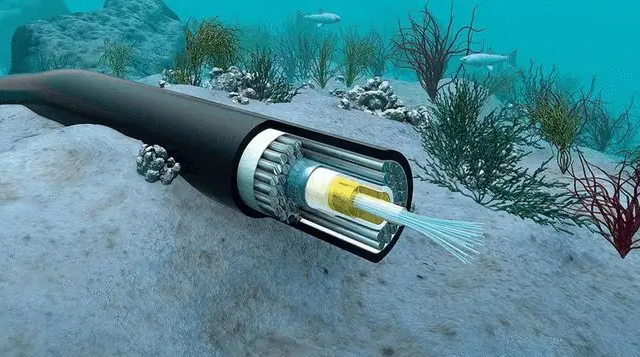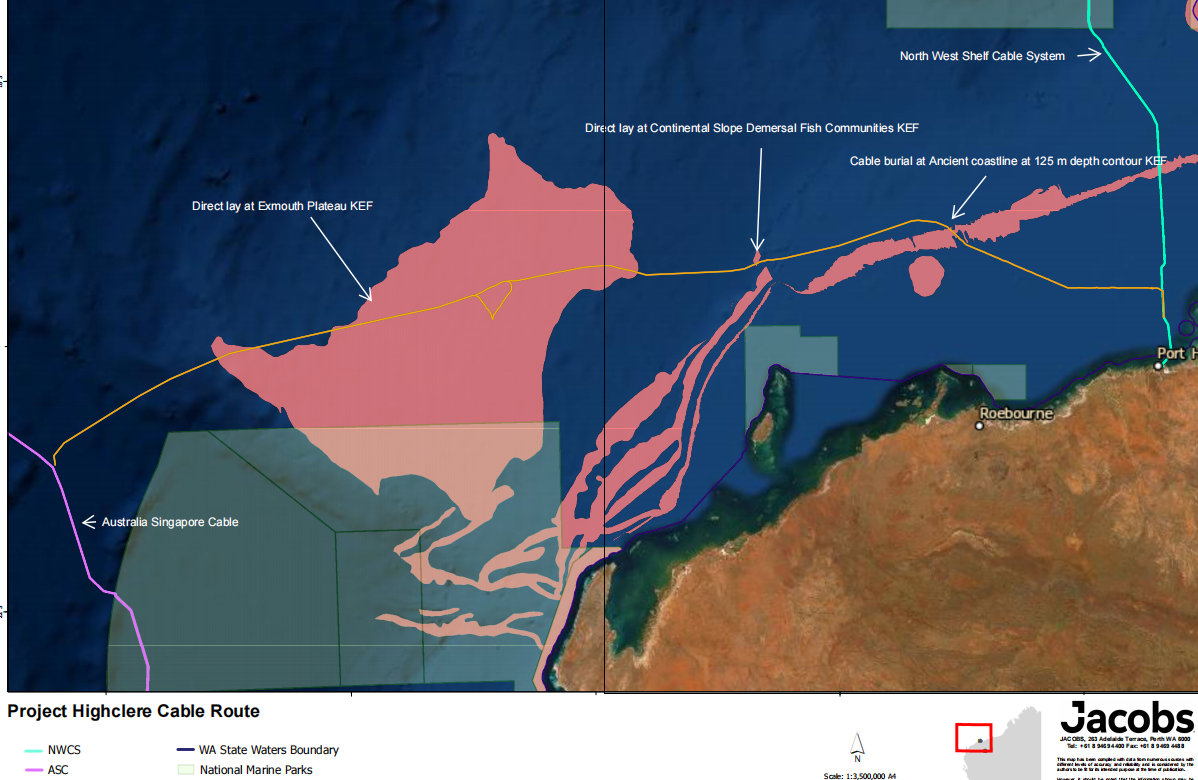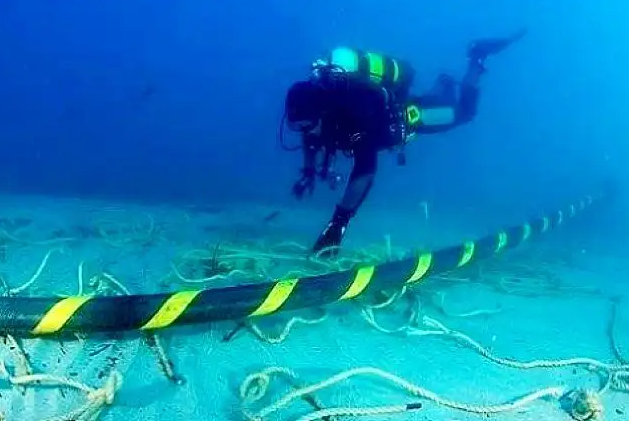Submarine cables are cables wrapped in insulating material and laid on the sea floor for telecommunications transmission. It can divides into submarine communication cables and submarine power cables.

Submarine communication cables
It is mainly used for long-distance communication network, usually used in long-distance islands, cross-sea military facilities and other important occasions. Modern undersea communications cables use optical fiber to carry telephone and Internet signals.
Submarine power cables
The laying distance is much shorter than that of communication cables. It is mainly used for connecting between land islands, crossing rivers or harbors, connecting drilling platforms on land or connecting drilling platforms to each other.
Submarine CABLE laying mainly includes three stages: the cable route survey and cleaning (front), submarine cable laying (middle) and buried protection (back).
This includes not only bathymetric, topographic, shallow stratum profile survey, sediment surface sampling, column sampling and static penetration survey, but also traffic and construction conditions and obstacles that reflect the status of Marine development activities.
Recently, use of advanced GPS post-processing positioning and static touchdown (CPT) technology has greatly improved the speed and effectiveness of surveys.
When laying submarine cables, it is necessary to control the sailing speed of the laying ship and the release speed of the cables to control the water entry Angle of the cables and the tension of the cables, so as to avoid damage to the cables due to too small bending radius or too large tension.
In shallow seas, such as water less than 200 meters deep, the cable is buried. In the deep sea, the cable laying ship releases the cable, and the underwater monitor and underwater remote control vehicle are used to monitor and adjust constantly to control the forward speed and direction of the laying ship and the speed of the laying cable, so as to avoid the uneven places and rocks to avoid damaging the cable.
In the last stage of construction, the submarine cable is mainly buried to protect, reduce the impact of complex Marine environment on the submarine cable, and ensure the safety of operation.
In the sand and silt area, a trench about 2m depth is created by high-pressure flushing. The cable is buried in the trench and covered with sand. In coral reefs and clay areas, trench 0.6-1.2 m deep is cut with a cutting machine, and the cable is buried in the trench for natural back-filling to form protection. In the hard rock area, it is necessary to cover the cable with cement cover and other hard objects to implement protection.
The submarine cable project is recognized as a complex and difficult large-scale project by all countries in the world. Complex technologies are used in everything from environmental exploration and ocean physical surveys to the design, manufacture and installation of the cables.
According to incomplete statistics, the number of submarine cables under construction or in operation around the world has exceeded 400, with a total length of over 1.3 million kilometers. Ninety-nine percent of all transoceanic Internet data is transmitted via undersea cables.

Construction has begun on a 19,200-kilometer submarine cable system from Singapore to France, CCTV News reported on Feb 22. Construction of the submarine cable, which passes through countries in Southeast Asia, the Middle East and Europe, is expected to be completed in the first quarter of 2025.
The submarine cable will provide a lowest-latency connection between Southeast Asia, the Middle East and Europe, transmitting more than 100 terabytes per second, equivalent to 40,000 high-definition videos per second.
There are already five submarine cables connecting Southeast Asia and Europe. It is reported that the sixth section will use more fiber systems. More than double the capacity.
The Egyptian president recently discussed with Dimitri Kopilosis, Chairman of the Greek power company Kopilosis, the construction of an undersea cable to transport Egyptian-generated renewable energy through Greece to Europe.
In addition to the submarine cable project, the feasibility of building solar and wind projects that would generate a total of 9.5GW of electricity was also discussed. These initiatives are aimed at developing Egypt's vision as an electric interconnection point between Africa and Europe.
Australian Network service provider Vocus has revealed it is ready to start deploying an undersea cable that will connect two existing cable systems, namely the North West Cable System (NWCS) and the Australia-Singapore Cable (ASC).
The cable system, called Project Highclere, is "now in the deployment phase," Vocus International CEO Jarrod Nink said.
According to regulatory documents, the system will extend from the existing branch line of the NWCS system (about 41km north of Port Hedland) to the existing offshore branch unit of the ASC cable (about 450km west of the Exmouth Peninsula).
It is understood the Highclere project will provide the final piece of the jigsaw of the so-called Darwin-Jakarta-Singapore cable system, a $500 million interconnect cable system linking Darwin, Port Hedland, Perth, Christmas Island, Jakarta and Singapore.

After three industrial revolutions, mankind has entered the information age, and submarine cables have become the aorta connecting countries in the world.
Today, more than 95 percent of the world's international information transmissions is carried by submarine cables. What kind of world would it be if undersea cables failed simultaneously all over the world?
Financial activity has ground to a halt. International trade has fallen into recession and, apart from some of the information transmitted by satellite communications, many news events abroad may not be known for months.
At present, there are more than 300 trans-oceanic submarine cables in the world. With the change of time, the submarine cables have completed the transformation from a copper core to optical fiber, and the data transmission volume has also increased rapidly.
The cable laid by face book and connecting many countries in east Asia has even reached the super data transmission capacity of 55Tb per second. Faster, a Google-funded submarine cable, is up to 60 terabyte per second.
The laying of submarine cables is a necessary infrastructure construction for each country, which is of great significance to the development of the country.
With the development of science and technology, offshore wind power generation, information transmission, oil extraction and other operations are slowly being carried out. In the future, submarine cables and optical cables may be used for more than just information transmission.

Both at home and abroad, the research and development of submarine cables are attached great importance. The world is now focusing on the development of new energy industry, which has a huge market space.
Take the war between Ukraine and Russia, for example, in which the United States is frequently involved, resulting in a more difficult relationship between Russia and the United States.
Russia has recently reached the limit of its patience and warned the US of its provocations: if the US interferes in this matter again, it will contain their life gate within 24 hours. So what does Russia mean by the door to contain the United States?
According to experts, the undersea cables are most likely what Russia is referring to as the key to deterring the United States.
Therefore, the laying of submarine cables plays an important role in the development of the country.